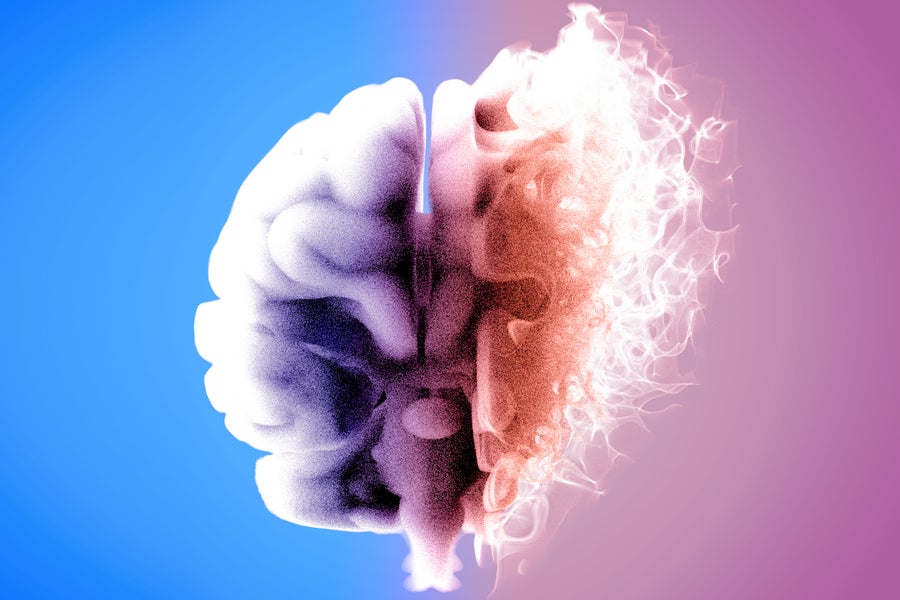December 17, 2024
3 min read
Why Some Brains Don’t Rot and Other Wild Things We Learned about the Human Body in 2024
From periods of rapid aging in our 40s and 60s to ancient brains that don’t
decompose, here are some of the year’s most intriguing stories about human biology
By Tanya Lewis
Bob_Bosewell/Getty Images
It can sometimes feel like health coverage is a constant drumbeat of bad news—and indeed, this year has had its share of negative stories, from the emergence of H5N1 bird flu in U.S. dairy cows posing a pandemic risk to threats to reproductive health care.
But we’ve learned quite a lot of fascinating things about the human body this year, too, in relation to topics ranging from eye and uterus transplants to vitamin D levels and aging. Here are a few of the most intriguing stories we covered in physiology and medicine this year.
New Pain Medication
On supporting science journalism
If you’re enjoying this article, consider supporting our award-winning journalism by subscribing. By purchasing a subscription you are helping to ensure the future of impactful stories about the discoveries and ideas shaping our world today.
Scientists discovered a new type of pain medication that blocks nerve channels before the pain reaches the brain. Called suzetrigine, it works on peripheral nerves, so it is not addictive like opioids. Vertex Pharmaceuticals, the company that makes the drug, applied for U.S. Food and Drug Administration approval of it earlier this year. If granted, it could provide another option for treating moderate to severe pain.
Vitamin D Dilemma
Studies in the early 2000s suggested that vitamin D deficiency was a major contributor to cancer, heart disease, dementia and other illnesses, and that taking supplements might help. But more recent studies have failed to show clear benefits of taking vitamin D and found that most people have adequate levels of the nutrient.
Bouts of Aging
A study showed that people experience dramatic aging shifts in their mid-40s and 60s. Researchers found that levels of many molecules and microbes in the human body—all of which are important for healthy cellular and tissue activity—experienced big shifts around ages 44 and 60, rather than in a continuous process throughout middle age.
Ancient Brains Don’t Rot

Normally after we die, our brain turns to slush in a process called putrefaction. But scientists have discovered human brains that are hundreds or even thousands of years old and don’t decompose along with the rest of the body. These remarkable specimens, found in places ranging from mass graves to shipwrecks, may undergo a process of protein misfolding akin to what happens in neurodegenerative diseases that chemically links the proteins together and keeps them preserved well after death.
Transplanting an Eye
Aaron James became the first person to receive a whole-eye and partial-face transplant in 2023. As of late 2024 the eye still lacked sight, but it had maintained its shape, and James was recovering well. “The fact we achieved that is remarkable,” says Eduardo Rodriguez, one of the many physicians involved in James’s care. “What would happen afterward, no one could say because it had never been done.”
Human Lifespan Limit
Human longevity may have a theoretical upper limit, new research has found. After increasing for much of the 20th century, life expectancy gains are slowing down or reversing in many countries, suggesting human lifespan may have plateaued.
Uterus Transplants Are Here

People who are born without a uterus, or with serious uterine abnormalities, have few options for having children. But in recent years it has become possible to transplant a uterus from a living or deceased donor—often the recipient’s mother or sister—and it can carry a baby to term. Around 50 such babies have now been born from transplanted uteruses.
Nobel for MicroRNA
This year’s Nobel Prize in Physiology or Medicine went to two scientists for their discoveries involving microRNA—small bits of genetic material found in most animal species (including humans) that have vital roles in regulating how genes get expressed. Much of the work was done in the tiny worm Caenorhabditis elegans, but the findings could point to treatments for cancer and other human diseases.














